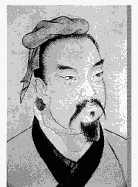What are the historical philosophical bases of Chinese Martial Arts (Wushu)? The ideas associated with Chinese martial arts changed with the evolution of Chinese society and over time acquired some philosophical bases: Passages in the Zhuangzi (莊子), a Daoist text in the 4th century BCE, contains psychology and practice of martial arts. The Tao Te Ching, often credited to Lao Zi, is another Daoist text that contains principles applicable to martial arts. According to Zhou Li, one of the classic texts of Confucianism, Archery was a part of the "six arts" of the Zhou Dynasty (1122–256 BCE). It is the book —The Art of War, written during the 6th century BCE by Sun Tzu, | 
|
that deals directly with military warfare and contains ideas that are used in the Chinese martial arts. "Six Chapters of Hand Fighting", were included in the Han Shu (history of the Former Han Dynasty) in 39–92 CE, and the prestigious physician, Hua Tuo, composed the "Five Animals Play"—tiger, deer, monkey, bear, and bird, around 220 BCE. Daoist philosophy and their approach to health and exercise have influenced the Chinese martial arts to a certain extent. |